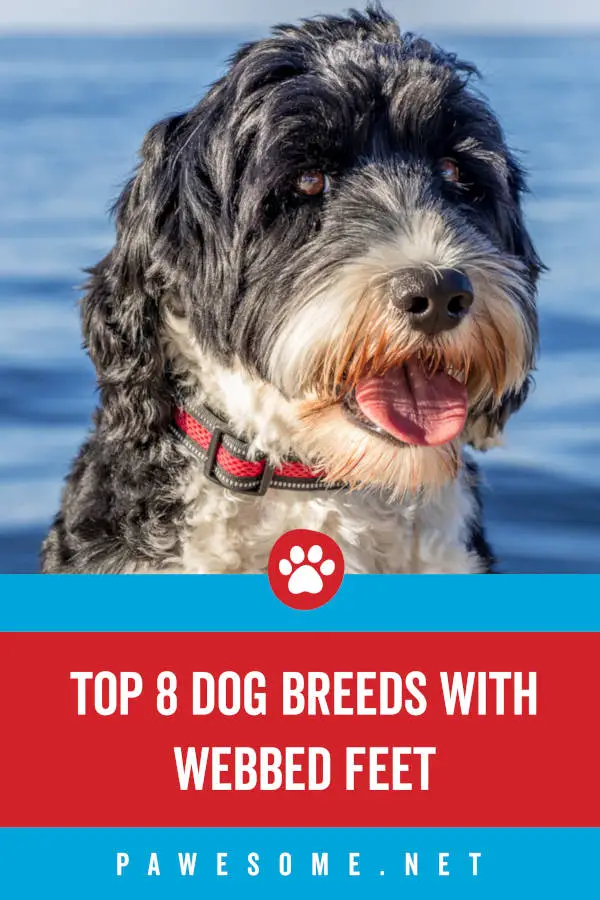Usually, when you think of webbed feet, you think of birds and animals like ducks, geese, frogs and other creatures that spend most of their time in the water. The webbed feet of these animals and birds aid them in swimming easily through the water quickly and easily. While webbed feet are commonly present in water dwellers, you may sometimes see webbed feet in land animals such as dogs.
You may be surprised to know that all dogs have feet that have some kind of webbing. If you look at your pooch’s paw closely and separate the toes, you can see some skin connecting the toes. Although dogs are cursorial animals having limbs that are built predominantly for running, there are some breeds of dogs that have a lot of webbing between their toes that make them more agile in the water.
So, what is webbing? Webbing is simply a membrane connecting the toes. Ducks are popular for their distinctive triangular, webbed feet, but they have toe bones just like the other birds. The webbing in the feet works just like flippers or boat paddles. The webbing creates a flat and wide foot covering greater surface area that aids the birds to paddle through the water quickly and efficiently.
Instead of just tearing through the water, webbed feet help the animals to move with a lot more force and even on land, the webbed feet enable the animals to navigate and move on rough and tricky terrain. The greater surface area provided by the webbing allows the animals to walk without sinking into the mud and falling. Webbing is an evolutionary feature that has enabled animals and birds to adapt and flourish.
Why Do Some Dogs Have Webbed Feet?
It is quite interesting to know that in the embryo all land animals possess webbed feet. However, the membrane disappears during the development cycle. Dogs having more webbing than what is normally seen are usually bred in order to retain this characteristic.
Throughout history, we have heard and seen several dog breeds that have worked to herd animals in the water or retrieve game. Evolutionary change, as well as selective breeding, has made it possible for some dogs to be excellent in water, being able to swim faster and having greater control compared to other dog breeds.
Dogs’ paws are evolved in a way that every part has a certain function. The paws have pads on the bottom that help to protect the feet and offer grip when they walk. The toenails allow them to dig and offer traction when walking. And, the webbing offers stability for walking and helps them to swim better.
However, the webbing effect in dogs is not as prominent as other aquatic animals and birds. Dog breeds with prominently webbed feet have the advantage of being very strong swimmers, while also being capable of roaming on land. The webbed feet allow the dogs to glide on the surface of the water so that they can retrieve objects and even people.
Normal feet have the tendency to sink in boggy areas and also tend to slip on slick, smooth areas. Whereas, webbed feet are beneficial for dogs running on muddy areas. The webbing helps in making the dogs more sure-footed and prevents them from getting stuck in mushy areas. In this article, we will be discussing some of the best 16 dog breeds having webbed feet.
Dog Breeds with Webbed Feet
Newfoundland
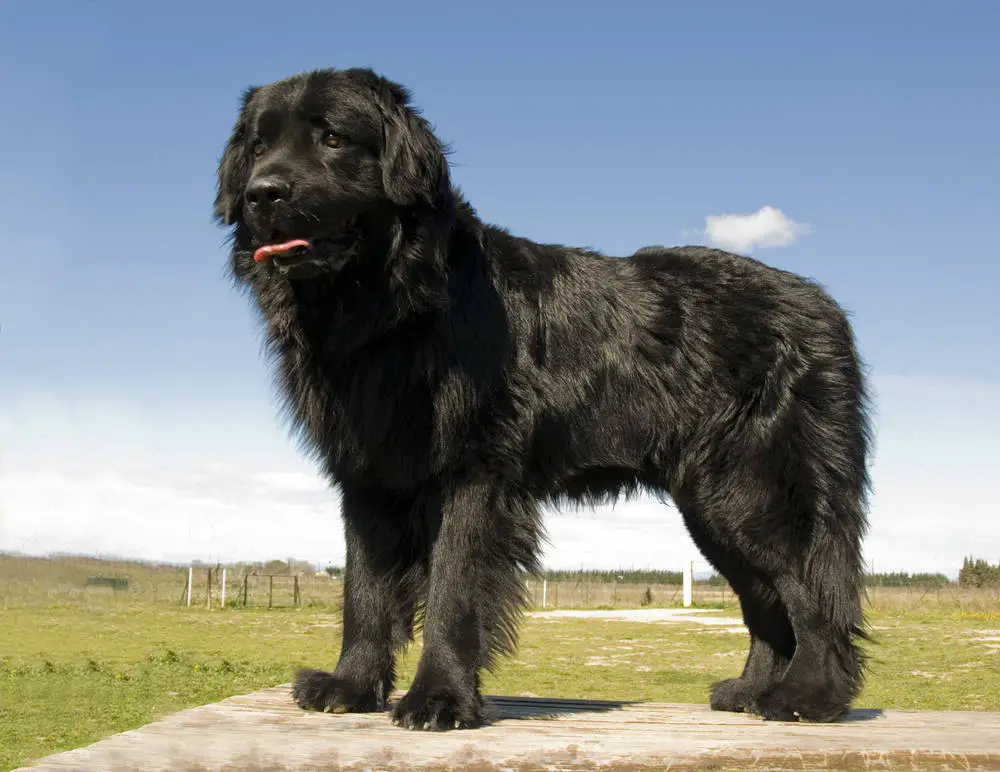
Newfoundlands are among the most popular dog breeds having webbed feet. Newfoundlands are giant, woolly, sweet-tempered dogs that were essentially working dogs found on Canadian fishing boats. Their muscular build enabled them to specialize in hauling fish and rescuing people from the freezing Canadian waters. These dogs have a variety of characteristics that make them ideal for the water.
Newfoundlands have thick, waterproof coats that keep them warm in frigid temperatures and their big webbed feet with long toes help to propel them in water and make them excellent swimmers. The unique aspect of these dogs is that they swim differently compared to other dogs and their paws move downward and outwards instead of the regular doggy paddle, which allows them to power through the surf and waves.
Portuguese Water Dog
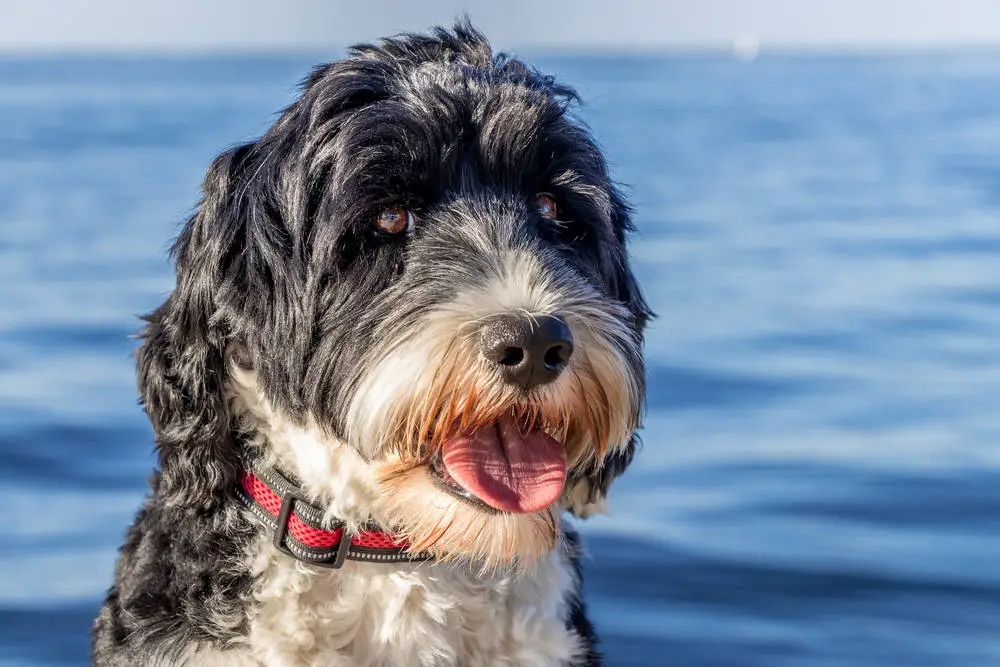
Originally hailing from Portugal, Portuguese Water Dogs are natural swimmers, thanks to their webbed feet and thick, waterproof coats. These intelligent pooches were originally used by the Portuguese fishermen who required muscular, athletic and hardworking dogs that could swim in the cold seas to herd fish towards the fishing nets, salvage small things from the water such as tackles, etc. and also deliver messages from one boat to another.
The Portuguese Water Dog has webbed feet that enable them to navigate the waters efficiently. These dogs have a smaller build compared to Newfoundlands and cannot carry heavy loads. So, they are essentially used for herding. Their athletic stature and curly, waterproof coat ensure that these dogs can remain in the water for long periods of time. Portuguese Water Dogs are fiercely loyal. Sunny and Bo are the two most famous Portuguese Water Dogs, who were the pets of the former President of the US, Barack Obama and were famous in the White House during his time.
Redbone Coonhound
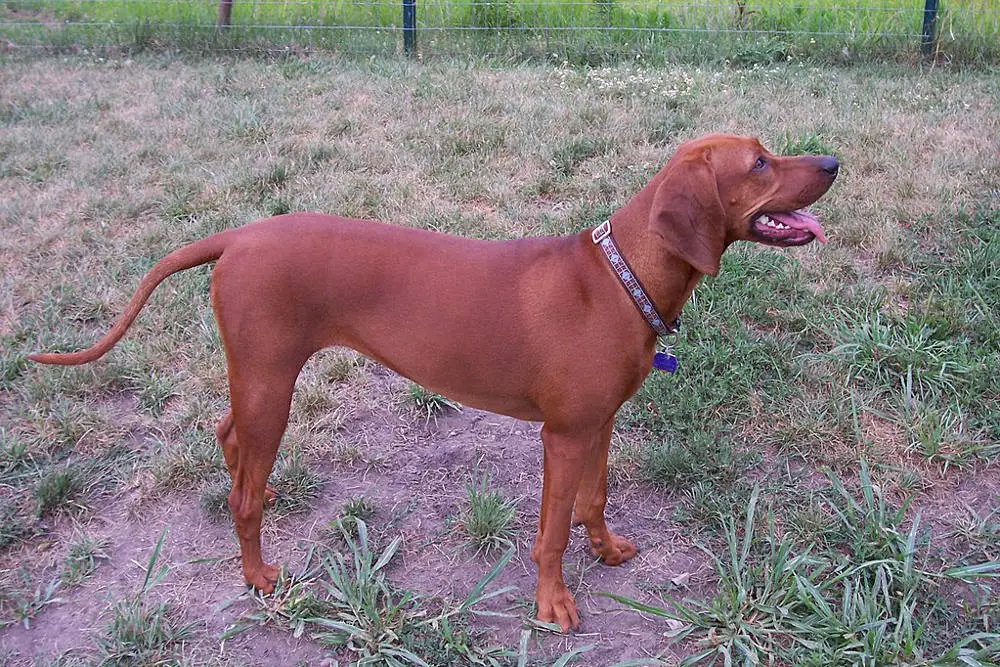
This is a breed that originated from England and the Redbone Coonhounds that you see today have been developed in the southern part of the United States. This breed was bred selectively to navigate through the swampy terrains of Georgia and Florida and the Mississippi and Alabama rivers. Redbone Coonhounds are popular for their courage and they can venture fearlessly into the swampy areas and scare away dangerous animals like black bears, alligators and cougars.
They also help to track down crafty, quick raccoons and trap them in trees, helping hunters to go in and kill them for their pelts. These Redbone Coonhounds have webbed feet that allow them to navigate the swampy areas without slipping and sinking into the mud when running after a super-fast raccoon. These dogs are also very powerful swimmers and can handle rapid river currents. Redbone Coonhounds are built to handle the terrains of America, which is why they are mainly found in the United States.
Otterhound
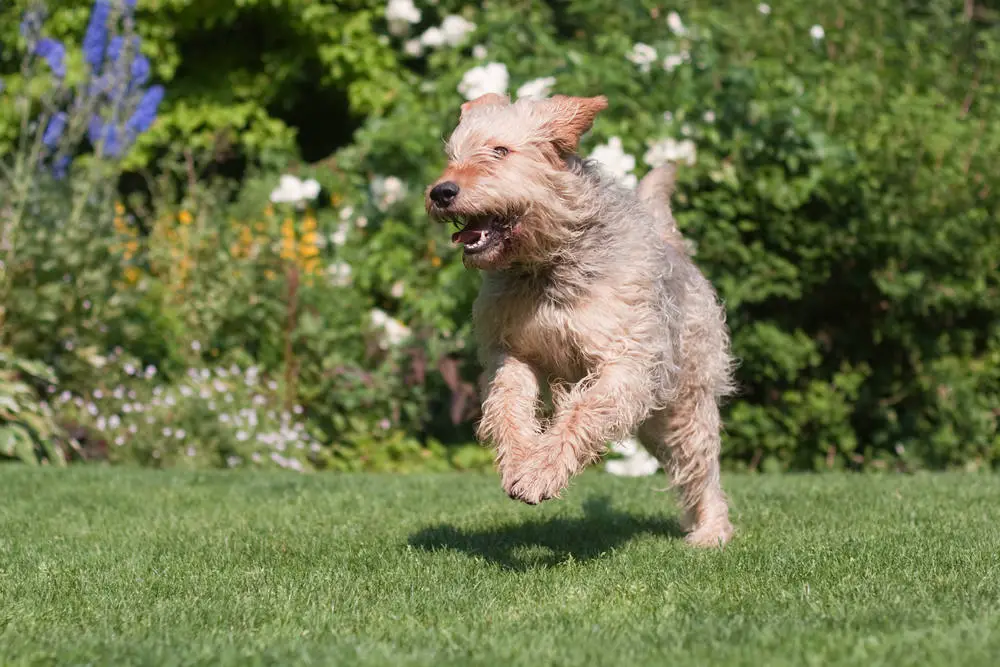
Native to the United Kingdom, the Otterhound is a fairly rare breed nowadays. Otterhounds were bred mainly in the 19th century to help hunters in hunting otters, which were regarded as invasive pests. As the otter population declined, the popularity and numbers of Otterhounds declined too, which led to both otters, as well as Otterhounds, becoming quite rare. Today, Otterhounds are included on KC’s (Kennel Club) list of vulnerable native dog breeds.
Otterhounds have distinctive webbed feet, which offered superior mobility and speed in water and were invaluable for the dogs’ water-based lives. Even today, Otterhounds are renowned as being powerful swimmers. They dive into the water and can even stick their heads under the water. Otterhounds have a long, shaggy coat that is waterproof and gives them a scruffy, lovable look and highly sensitive noses.
These features along with their large, webbed feet make it very useful to track down their prey. The dogs have thickly padded feet with arched toes and their webbed feet help to spread the foot when Otterhounds wade through the water or walk through the mud and offer greater stability and control. Otterhounds have strong, broad shoulders that allow them to swim all-day-long without getting tired.
Dachshund
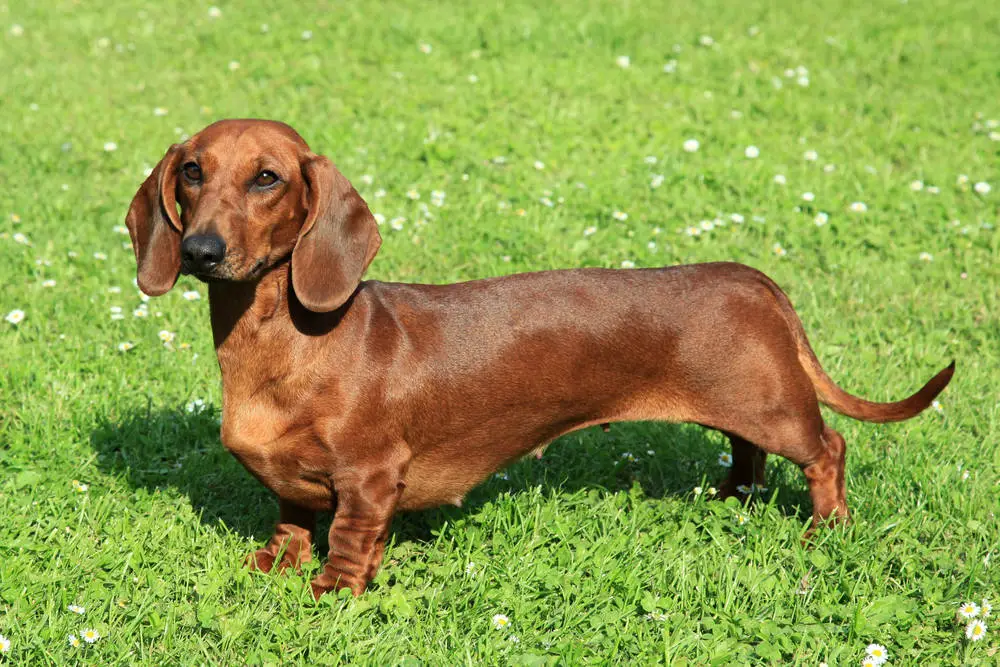
Also known as the “Weiner dog” because of its short, slender body, the Dachshund is a scent hound, which was originally bred for hunting. The dog’s elongated body and short legs make him perfect for hunting and getting into tight spaces. As early as the 17th century, Dachshunds were used in Germany for their abilities of hunting and retrieving, where they could enter burrows of small animals like badgers, which is why the name “Dachshund” itself has a Germanic origin, which means “badger hound”.
Dachshunds have an excellent sense of smell and their thin, long body shape allows them to enter into the narrow burrows of small animals like rabbits, badgers and foxes easily, while their lower body remains near the entrance that allows them to pull themselves, as well as their prey out easily. Dachshunds have webbed feet that they don’t use for swimming but for digging. The membrane between the toes act like a small shovel and help to dig and push the dirt out quickly and efficiently.
Dachshunds are agile dogs that move very quickly and they have a lot of strength. They are quite courageous and can even tackle larger animals like boars. Dachshunds are curious dogs, always ready for an adventure. These cute dogs with their unique looks and vivacious personalities have won the hearts of millions of dog lovers worldwide and are among the most beloved family dogs.
German Wirehaired Pointer
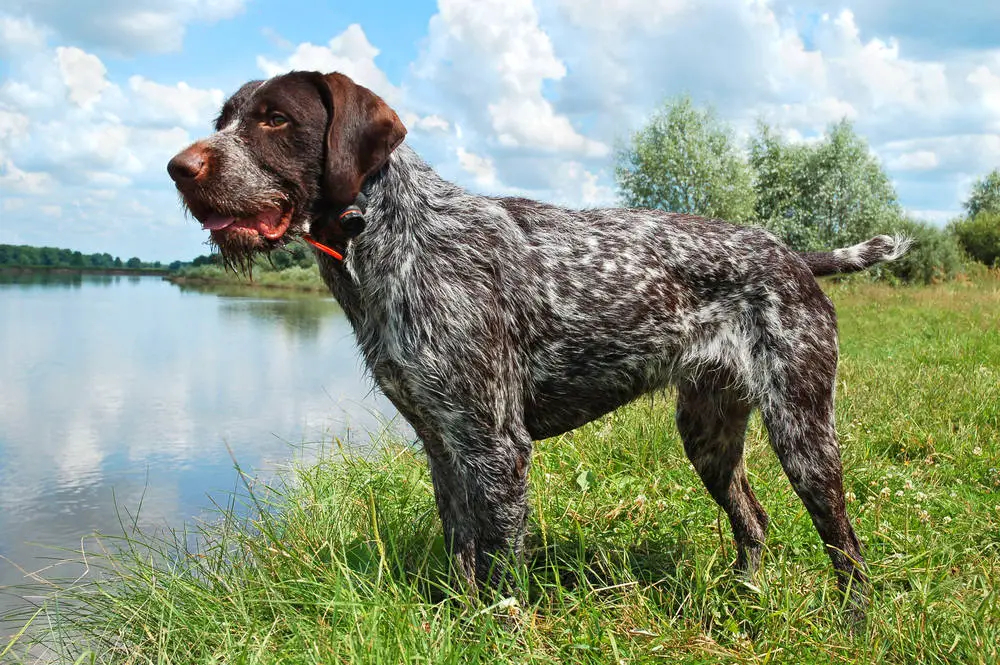
German Wirehaired Pointers are excellent hunting dogs, whose origins can be traced back to Germany. Bred to help hunters, these dogs were great assistants for hunters for bird shooting. The German Wirehaired Pointer is extremely versatile. Not only is he a water dog, but is also a pointer, as well as a retriever, for waterfowl and bird hunters.
German Wirehaired Pointers have a keen sense of smell, which they used to track down birds shot by hunters and retrieve them for their owners. The physical traits of the German Wirehaired Pointer make him perfect for hunting activities and a wide variety of sports. German Wirehaired Pointers have a thick, waterproof coat, a long, strong body and webbed feet, which make them well-suited for any kind of terrain, be it in muddy swamps or mountains, they can speed through water or dry land and retrieve game very easily.
These dogs have paddle-like, webbed feet, which allow them to jump into the water and retrieve the prey. The strong constitution of the German Wirehaired Pointer allows him to jump in/out of the water as many times as required and enables him to spend all the time hunting and fetching.
Weimaraner
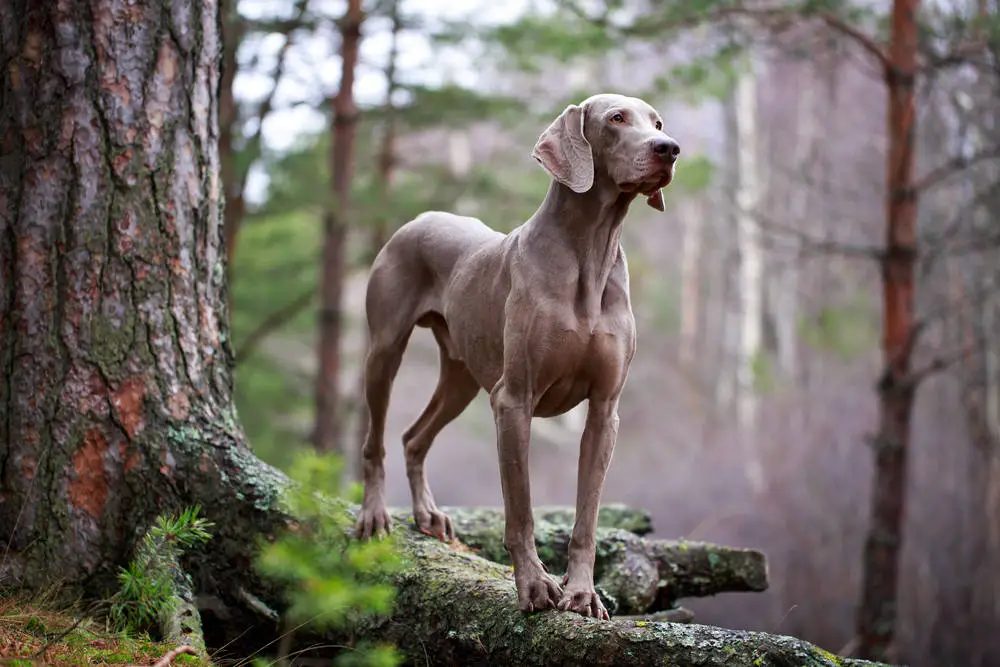
The history of Weimaraners can be traced back to the 18th century, where the large, agile dogs were used by royalty for hunting boar, deer, etc. Even today, these gorgeous “gray ghosts” are used for hunting birds, waterfowl and small game across the world. Weimaraners have webbed feet with arched toes that aid them in going through water, wet mud and any type of terrain to retrieve the game easily.
Their sleek, muscular, athletic bodies and their webbed feet help them to glide through the water effortlessly. The Weimaraner’s feet are well suited for running through dense brush and marshy areas to retrieve birds. Weimaraner’s are popularly used by hunters on their hunting expeditions.
Chesapeake Bay Retriever
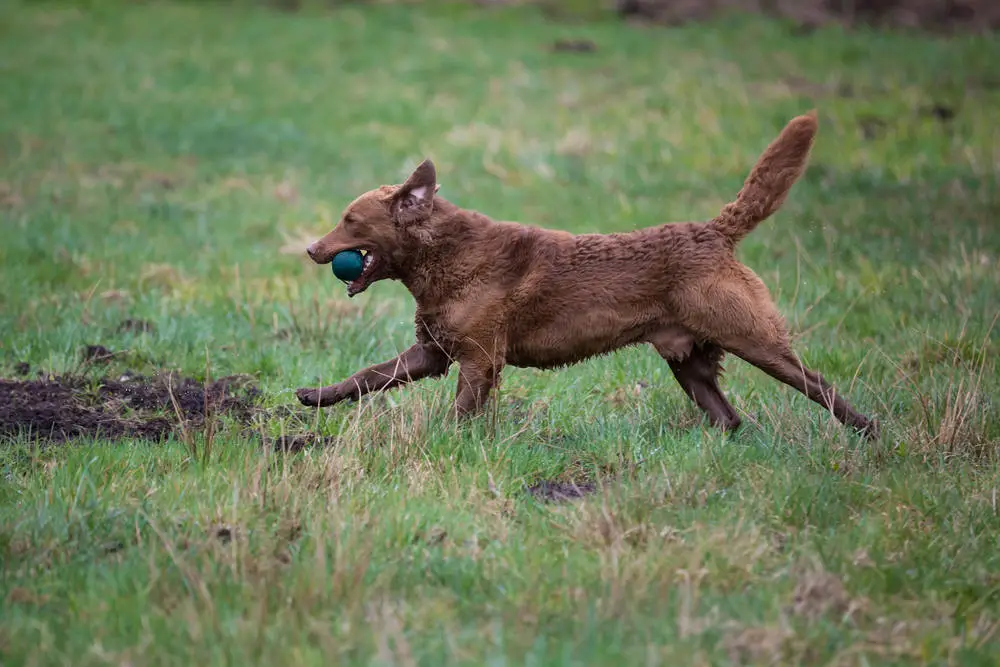
The Chesapeake Bay Retriever or popularly known as “Chessie” is originally from the Chesapeake Bay shores, an estuary that is surrounded by Virginia and Maryland. They are a kind of gun dog that can retrieve on land, as well as water, comfortably. Chesapeake Bay Retrievers share their ancestry with several other retriever dog breeds such as the Newfoundlands and the Irish Water Spaniel and are known to be tireless retrievers.
Chesapeake Bay Retrievers have very strong muscles that make them excellent swimmers and they have a thick double coat that’s waterproof and helps them withstand the cold temperatures of the water. These dogs have large webbed feet that help them to swim effortlessly and quickly through the cold waters and also offer stability while they move around in the marshy estuary areas. They have large, firm and rounded toes that offer excellent support.
Labrador Retriever
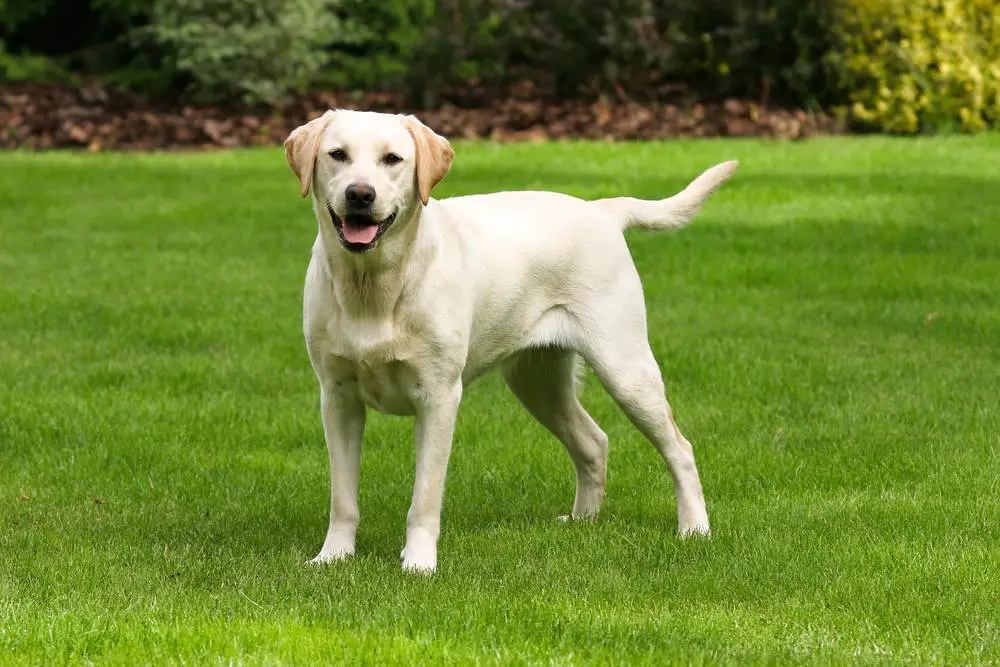
Labs or Labrador Retrievers are the ideal combination of active and friendly to make them one of the most popular family pets, and this is a very affectionate breed that is willing to show a huge amount of affection to their owners. This is a sturdy dog that weighs between 55 and 80 pounds at maturity, and they come in chocolate, yellow, or black coat coloring.
The coat on this dog is very sleek and easy to care for, but they tend to shed a decent amount all year round that requires routine upkeep and maintenance. You’ll get a very sweet-natured and intelligent dog who has a long history of working in and around water, where their webbed feet come into play. They’re very popular for retrieval in duck hunting, and it’s also common to see them performing search and rescue, explosive detection, assistance for disabled people, and therapy dogs.
Nova Scotia Duck Tolling Retriever
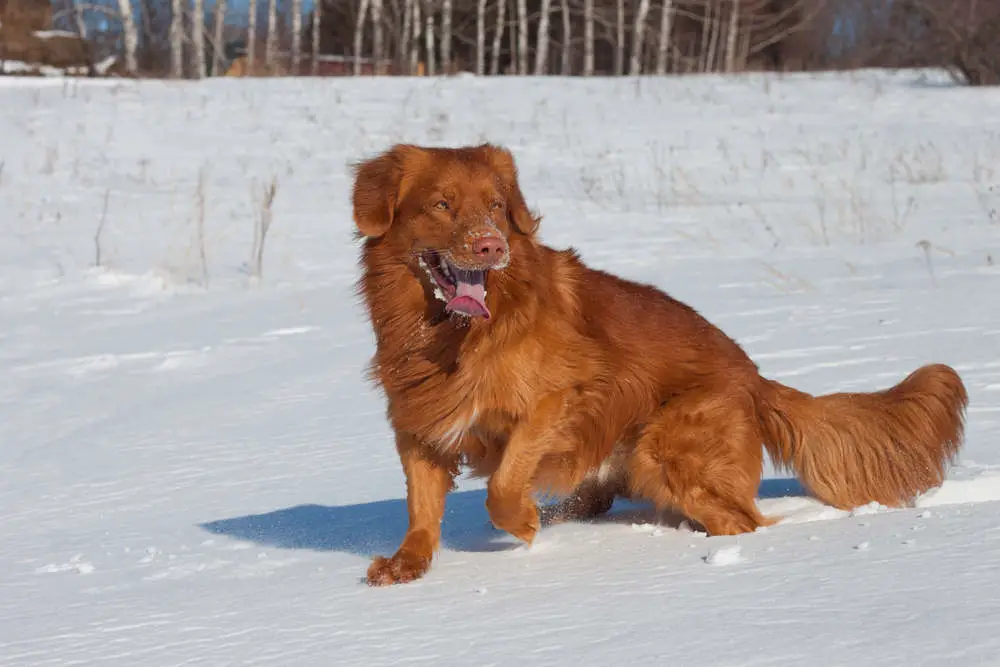
This medium-sized sporting breed is the American Kennel Club’s smallest recognized retriever breed, and the Nova Scotia Duck Tolling Retriever is a sporty breed with a stunning coat that comes in crimson hues with white markings. This dog is an upbeat athlete who is a very popular hunting companion with seemingly endless energy reserves, and they adore being in and around the water.
This breed was originally trained to hunt throughout Nova Scotia, as the name suggests, and they’ve slowly made the transition to very affectionate and energetic family dogs. They typically weigh between 30 and 55 pounds when they’re full-grown, and they stand roughly 19-inches at the shoulder, making them much more compact than other dogs with webbed feet. As long as you take time to socialize your dog, they can get along well with kids and cats.
German Short-Haired Pointer
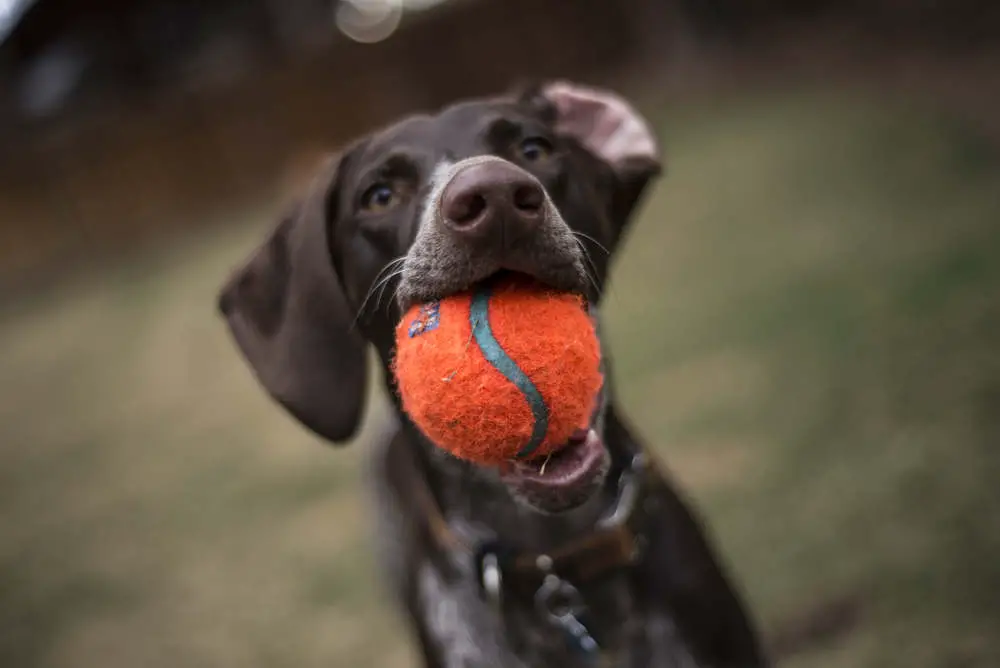
Anyone who loves to take a good romp through the woods or wet areas or who loves to hunt should consider the German Short-Haired Pointer. This is a very friendly and bright dog breed with a lot of energy, and they’re very eager to please and easy to train, making them excellent contenders for a family dog. They love to track and trail, and they’re also excellent at retrieving and pointing.
The males will get between 23 to 25-inches and weigh between 55 and 70 pounds at maturity, and the females weigh between 45 and 60 pounds and stand between 21 and 23-inches tall. The unique markings on their coat make this breed stand out, and they can be a solid color or white and black or liver and white with spots. The nose color will always match the coat, and they have webbed feet.
American Water Spaniel
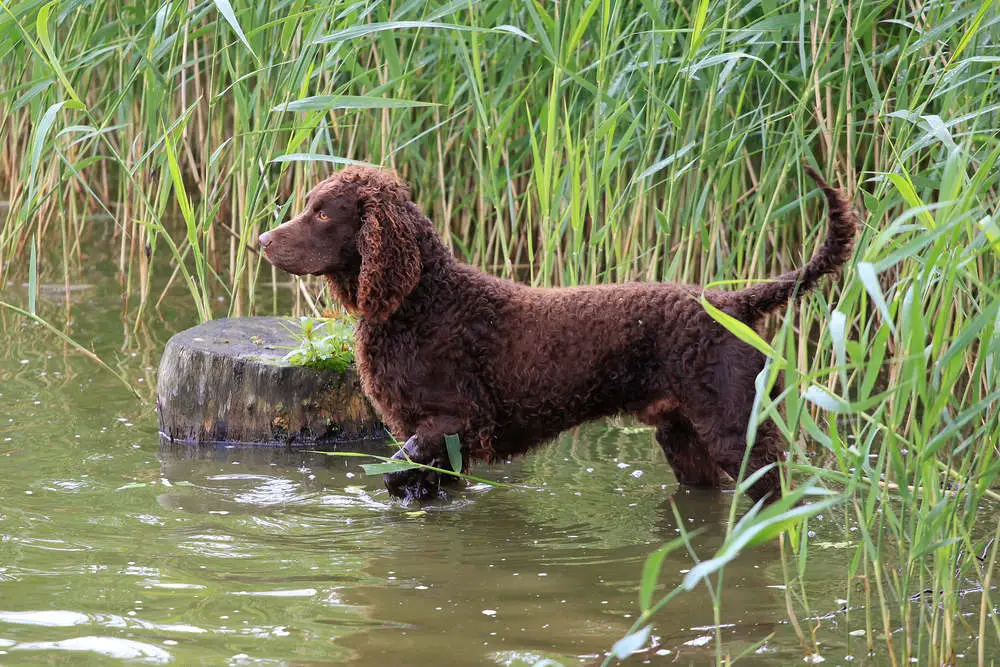
The American Water Spaniel is an intelligent and active dog that is a natural-born hunter and swimmer, and they’re Wisconsin’s state dog. They have distinct curly brown coats that will only come in shades of chocolate, brown, or liver. They won’t shed, but they do come with a very thick double coat that requires you to brush it two or three times a week to pull out dead hair and prevent uncomfortable matting.
Another fun fact about this breed is that they have extra-wide nostrils that allow them to track better when they’re out hunting, and they have webbed feet to push them through the water with a powerful tail that they use to change directions as a boat propeller does. The smaller size makes them very agile, and it helps to ensure that they can jump in and out of boats without a problem.
Irish Water Spaniel
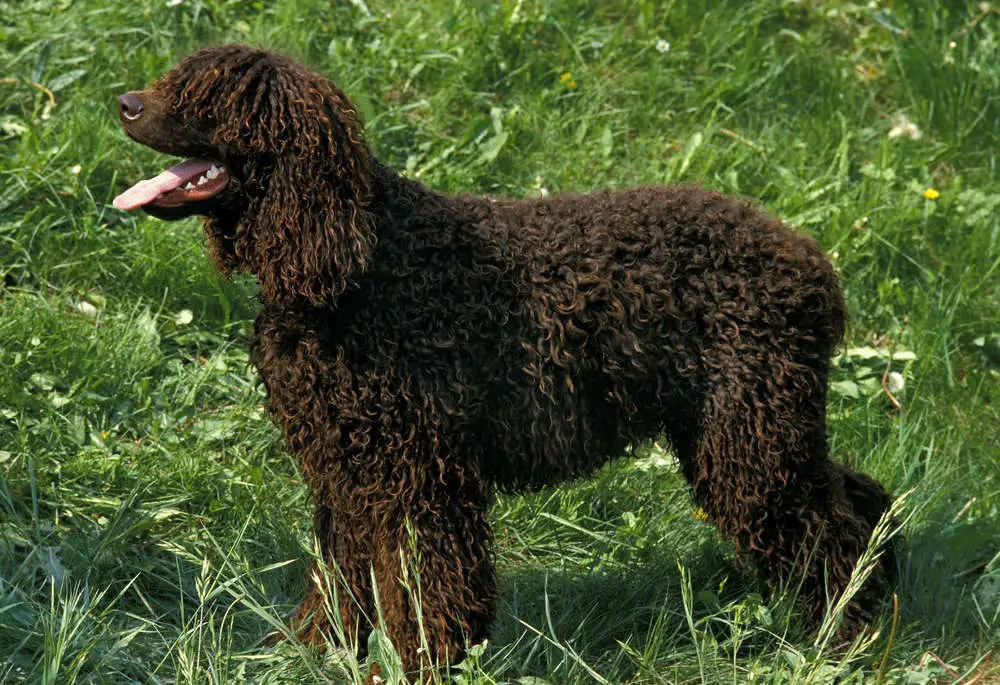
The Irish Water Spaniel is a more rare breed of dog that has a very laid-back and sweet personality. You’ll get a very intelligent dog that is easy to train and eager to please, and they make excellent family dogs due to their temperaments. They get along well with other pets and kids, but early socialization is key to ending up with a relaxed adult dog.
This medium-sized dog stands up to 24-inches tall and weighs up to 60 pounds, and they have a curly coat in a liver color that requires a professional groomer to upkeep to prevent matting. Even though they’re not 100% hypoallergenic, they’re a good choice for people who sneeze or sniffle around dogs. The webbed feet and long legs make it easy for them to move across different terrains.
Poodle
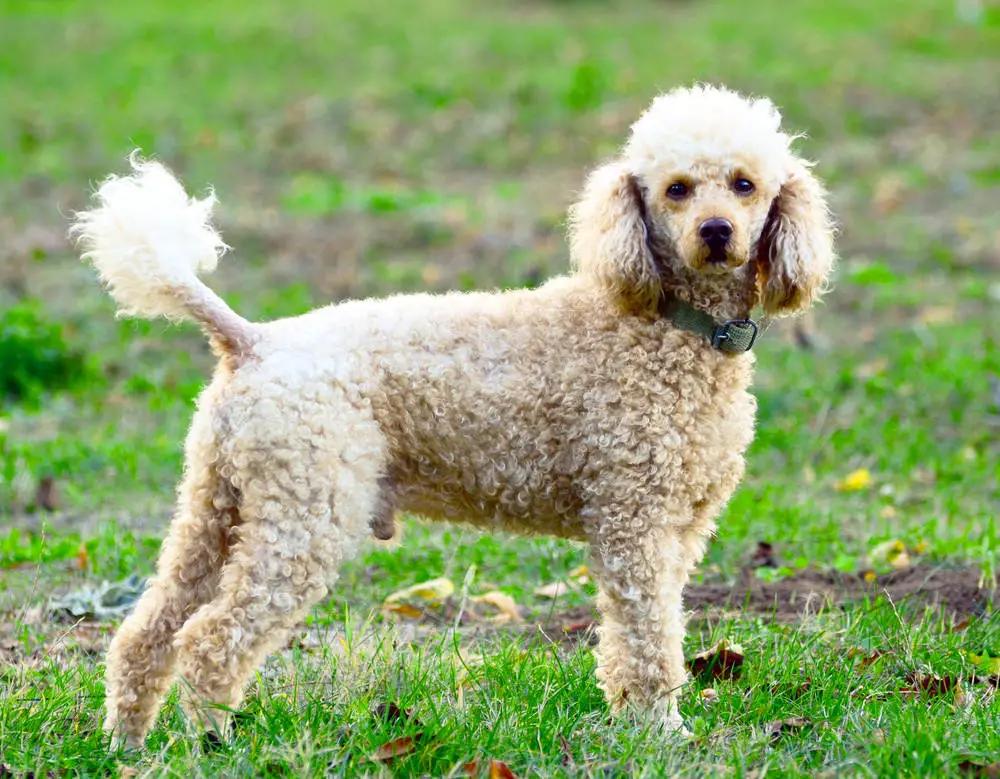
Many people are surprised to find that the Poodle is a very intelligent, active dog that takes very well to training while being loyal, peace-keeping family pets. This agile breed has an iconic curly coat with small, dark eyes and a pointed nose. The coat does take a lot of upkeep and general grooming to keep it looking nice, especially when it starts to get long as they’re prone to matting.
Poodles typically stand between 18 and 24-inches tall, and they can weigh between 50 and 70-pounds for the standard variety. They don’t shed a lot, and they need a high amount of exercise to stay happy and engaged. They tend to have more shy personalities around new people, but their people-pleasing tendencies tend to win out and allow them to warm up quickly. They’re fairly easy to train, and this makes them excellent companions or hunting dogs.
Wirehaired Pointing Griffon
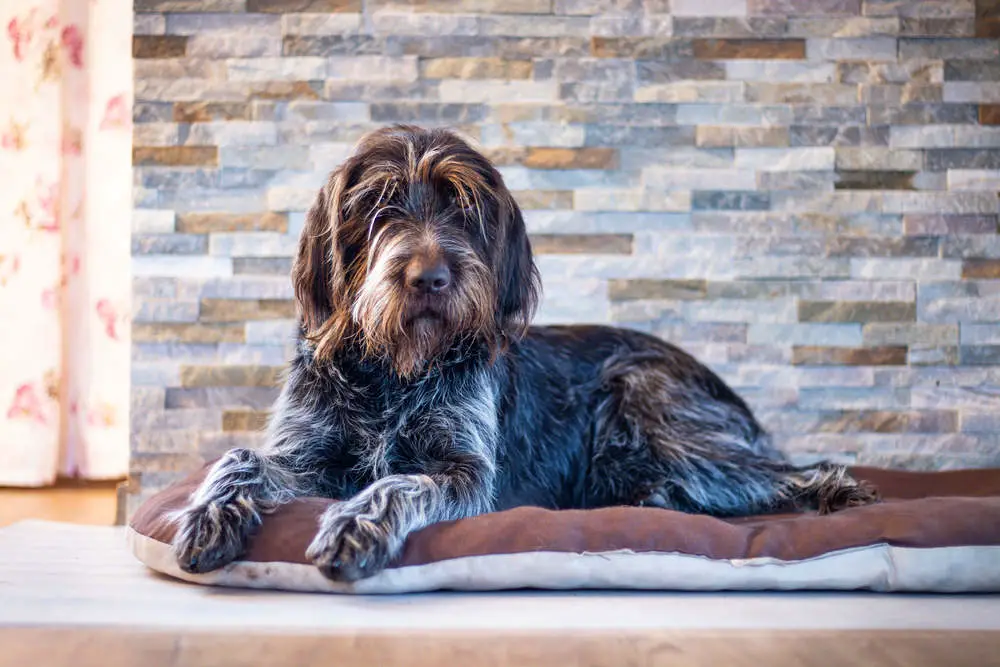
The Wirehaired Pointing Griffon was originally bred to be a hunting dog, and they’re a medium-sized breed that has big exercise needs. They do well hiking, swimming, or taking part in fast-paced activities like scent tracking, obedience, agility, and rally. They are also a breed that has a very scruffy look that makes them adorable, and they’re very loyal dogs who are family-oriented.
The low-shedding double coat this dog has is one of the defining points of this breed, and the undercoats are down-like and very soft with a medium-length wiry and straight hair overcoat that sticks out everywhere. The coat can be gray, chestnut, or brown. They’re eager to please, friendly, and loyal, and this makes them a very trainable breed, especially when it comes to hunting activities or agility.
Siberian Husky
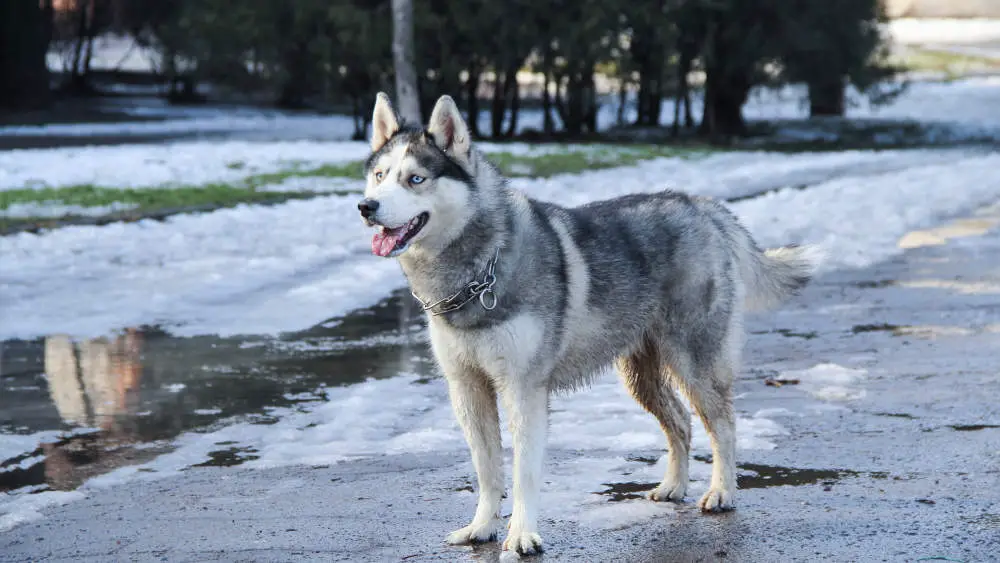
The Siberian Husky is always ready to go and alert, and these are heavy-duty working dogs that have a huge amount of excess energy to burn. If you’re an active person who wants a strong-willed and mischievous dog, this could be a good match. They’re natural pack animal who needs to interact with their people daily, and they do well in multi-dog households.
This breed comes with a two-layer, insulated coat that requires a lot of maintenance to help remove the dead hair, and they “blow” their coat twice a year. They weigh between 33 and 60 pounds with a very agile and sleek look, and they are independent enough to play outside in the cold for hours on end. The playful demeanor coupled with the eager attitude makes them a great family dog, and they’re up to go on a host of adventures with you every chance they get.
Final Thoughts
For your canine pal, webbed paws can have huge advantages. While almost all dogs have some type of webbing in between their toes, some breeds have been bred to have significantly more webbing, which aids hunting dogs to be more agile and faster in water and retrieve game from the water effortlessly. So, if you live near water, having a pooch with webbed paws can mean loads of fun and excitement for both you, as well as your canine companion.

